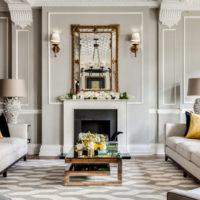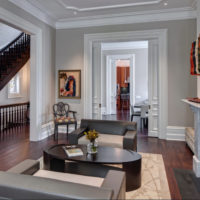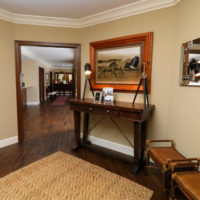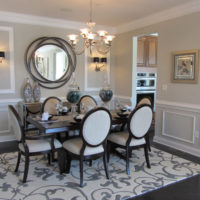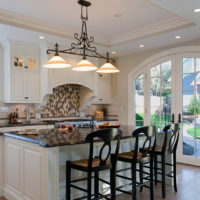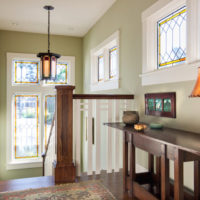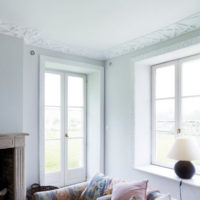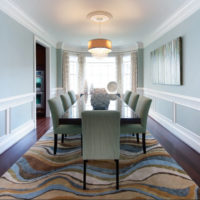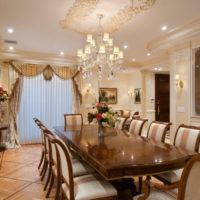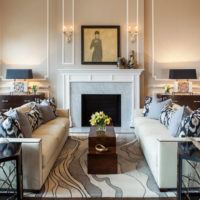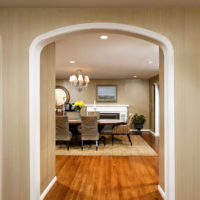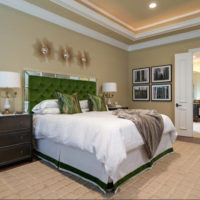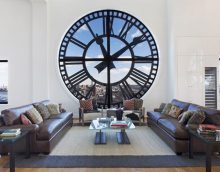How to use moldings in the interior
This type of decor was first used in France during the heyday of the Rococo style. In domestic culture, it also exists for a long time, but not so common. Interior moldings can be found in the Catherine Palace and in various old buildings. But with a certain modification, they have also become part of modern design, so we suggest that you study this phenomenon in more detail and learn how to use it to create a luxurious design of your own apartment.

With the help of moldings, you can create an original design, change the shape of the room and correct interior errors
Content
What is it
Moldings are decorative volumetric elements that have a smooth base on the back. In the process of decorating, they can be combined by texture, pattern or color. The most commonly used moldings are in the form of strips. But not only they make up this collection. This includes various round, triangular, square overlays that are used for decoration.

Moldings are the invoice type of decor used to add volume and relief to the interior
Moldings abound in buildings built during the Khrushchev era. They were used both for the exterior cladding of the building, and for the interior decor.
Designers use this type of decor to create compositions, to highlight one wall, to mask joints or smooth the contrasting transition of colors. You can also create a composition or make a frame for your photos. Moldings are also used to create panels, which can also decorate any wall.

Contrasting combinations give the interior originality, brightness and dynamism.
The considered type of decor has many advantages, but it is not so often used in modern design. This is justified by the fact that it is suitable for certain styles, gravitating to pomposity and antiquity. We will consider all methods of use, and be sure to find unusual and convenient options.
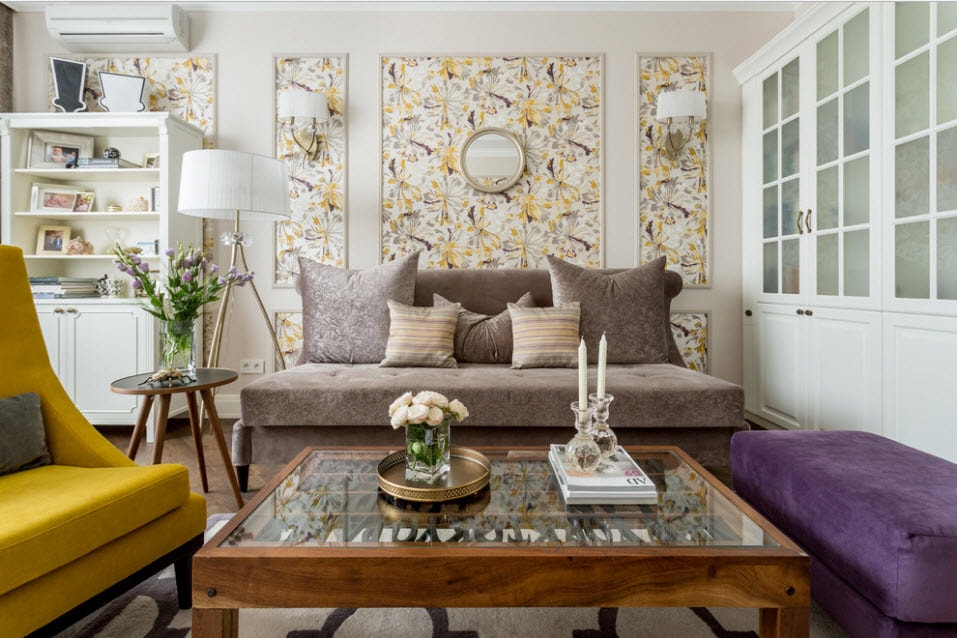
When choosing moldings, they are guided by the design and color solutions of the room
Advantages of moldings
Moldings in the interior have not only decorative value, but also practical. Thus, we can highlight a number of advantages of this type of decor.
- Hide surface imperfections. Relief elements perfectly mask roughnesses or surface damage, as well as soften joints of materials with different textures.
- Smooth the contrast of colors. The moldings lend themselves well to coloring. So that, if desired, they can be painted to any background. Thus, you can profitably beat the hard color transition on the wallpaper, framing them with moldings.
- Inexpensive. In stores you will find goods for a different budget, depending on the texture, color and material of manufacture. The most popular are polyurethane. They have a low cost and high wear resistance.
- Easy to install and maintain. Due to the fact that the wrong side of the product is flat, it fits snugly to the base and holds firmly. For fasteners, it is enough to smear the surface with glue and lean against the wall. In addition, the product does not require special care.If the material allows, it should be periodically wiped with a damp cloth.
Due to these advantages, moldings on the walls in the interior are used more and more often.

The monophonic neutral background of these walls does not seem boring and trivial due to the presence of moldings that divide the surface into clear geometric shapes
Varieties
Based on the wishes of the consumer, manufacturers make moldings of various types. They can be elastic and rigid, embossed and flat, colored and plain. The most common is the division into varieties depending on the material of manufacture, since the remaining characteristics are more dependent on this.
| View | Benefits | disadvantages |
| Wooden | Environmentally friendly, give the opportunity to paint and wet cleaning, durable and durable. | Heavy, require additional fastening, difficult to installationrequire mandatory processing with special tools for wood durability. |
| Gypsum plaster | They make it possible to make any texture and pattern on plaster, are durable, have a beautiful aesthetic appearance, traditionally emphasize style. | They are heavy and expensive, difficult to install, not suitable for decoration in an apartment. |
| Polyurethane | Lightweight, durable and easy to use. installation, thanks to a flexible surface give the chance to decorate surface with bends, have a low price, are available in a wide range. | Environmentally unsafe. |
| Foam | Cheapness, simplicity in installationlight weight. | They give the opportunity to decorate only smooth surfaces, have a high fire hazard, toxic, unstable to mechanical stress. |
| Polystyrene | Moisture-proof, give the chance of coloring, have small weight and low price. | Inelastic, poorly resistant to mechanical stress. |
| Metal | Strong, durable, have an original appearance, resistant to external mechanical stress. | Inelastic, relevant only for modern stylesrequire additional fastening. |
| Plastic | Water-resistant, provide the possibility of wet cleaning, have a wide range and color scheme. | Impossibility of painting, short-lived, toxic, deform with time. |

Moldings made of natural wood attract beautiful natural patterns and high environmental friendliness.

Plaster and metal moldings are less popular due to the high cost and more complicated installation, they are mainly used for designing very expensive design projects.

Foam products are the cheapest, but have low strength and durability

Polyurethane moldings are strong enough, durable and easy to install, and affordable cost attracts customers and "closes their eyes" to low environmental friendliness.
You can also choose the appropriate color and texture. Each of the presented species has a large assortment, and can offer a suitable option. Now let's figure out how to use moldings in the design of the room.
Use cases
Designers often use moldings in the interior to separate wallpapers. In this case, they perform an aesthetic function, help visually divide the room, and bring into a harmonious state various types of wallpaper that are not compatible with each other. However, this is not the only area of application.
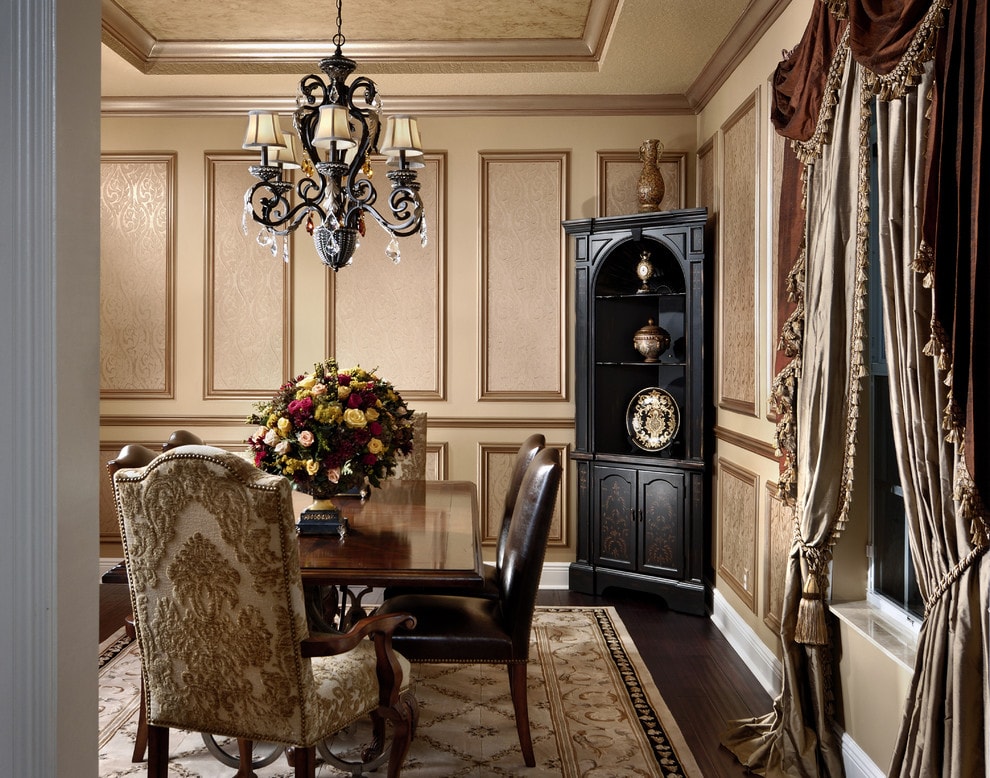
Painted planks are used to delimit the space of the wall or highlight any decorative feature
Moldings can be used not only on the walls, but also on the ceiling, on doors, on windows. In all applications, they fulfill an important function and help to make the design of the room more harmonious.
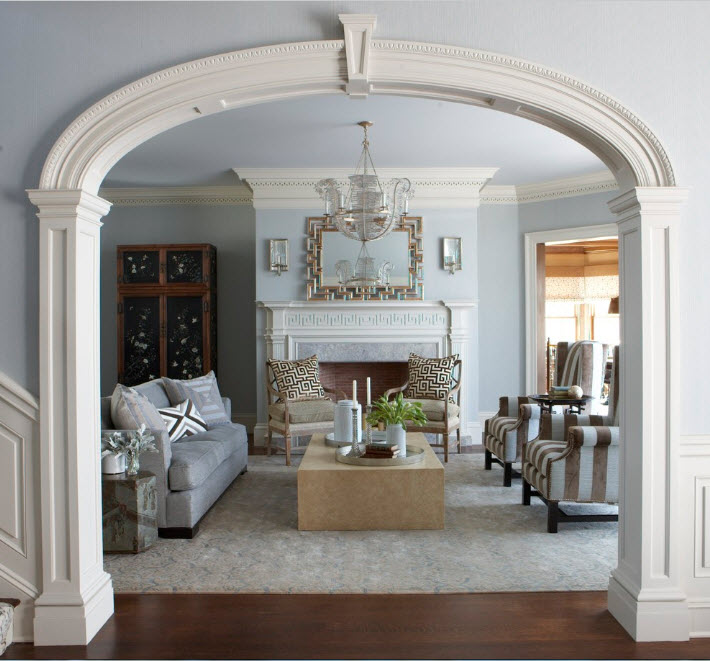
Moldings complete the image of the arched opening and, as a result, makes the whole interior more aesthetic
In addition, they can be used to create a separate composition, which will subsequently become an element of design.Let's consider decorating options in more detail.
Select the functional area
To delimit one of the areas of the room using wallpaper with molding in the interior. To do this, you need to choose a wallpaper and molding suitable for them, then make a selection by framing part of the wall.

In today's fashionable combination of paint and wallpaper, moldings are used to distinguish one coating from another
Important! During installation, molding is first glued, then wallpaper.
In this way, it is possible to distinguish the dining area in the studio, to focus on the wall above the bed in the bedroom. Moldings are used even in the bathroom, but only certain moisture-resistant types.
If you want to focus on one of the functional areas by adding a pattern or composition, think over the outline in advance. Apply it to the wall, and then glue the molding. And do not forget that you need to select a product suitable for the wallpaper and style of the room.
Use as a frame
In modern design, it is more common to use this type of decoration to create various compositions and their frames.
This year, it is popular to bring a piece of art into each room. This is expressed in the abundance of various paintings on the walls. You can find various photographs or reproductions of famous paintings in the kitchen, bedroom, living room and even the bathroom. In this case, moldings will be a great way to frame these paintings. With their help, you will be able to make a normal frame or create a complete composition - it all depends on your imagination.

The wall, broken by moldings into functional blocks, is able to distract attention from some interior flaws

Thin trims look concise in a compact room, and wider ones in a spacious room
Recently, handicrafts are gaining more and more popularity. In interior design panels of various orientations are popular. It can be a decoupage or a collage of photos. Here everything is decided by your skills. But moldings in this case play not the last role. With their help, you can create an ornate frame for paintings, or to focus on the location of photos.
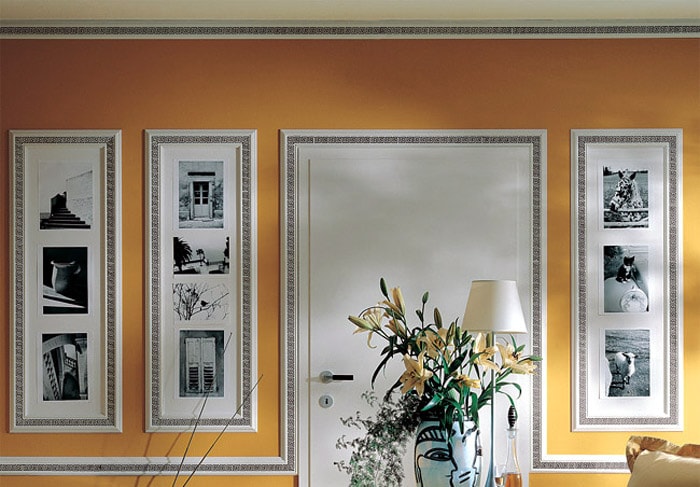
Decorating photos with moldings
In the hallway or bathroom, you can make a frame for the mirror. Thus, you visually increase it and give more comfort to the room. Some models are adapted for communication, so that around the mirror with the help of moldings, you can create spotlights and give luxury to the bathroom.
Window and door decor
In this case, the embossed elements also perform an important practical function. In the case of a door, they do not allow it to touch the wall and thereby damage the surface of the wall. In addition, I use moldings to decorate the wall, you do not have to spend money on expensive doorways and resort to the help of a master.

Usually, door trims are selected based on the color scheme of the paintings themselves
Choose a frame for the color of the door, and you will be able to make an imitation of an expensive doorway. But working in this case will be much easier for you, and repairs will be cheaper.
As for the windows, white moldings are the most popular here. They help to visually enlarge the window and make it more comfortable due to the frame. It is applied to the wall around the window in accordance with the instructions.

Snow-white moldings on the windows - a universal option for any interior

With the help of molding frames, you can visually enlarge compact windows
What styles are suitable
This type of surface decoration is not suitable for every style. It is mainly used in historical movements. We offer options with which you can create an old look in a new way.
Classic
The classic style has remained unchanged for many years, as it is a model. For this reason, in its arrangement there are notes of antiquity.Heavy carved furniture, arches and rounded window openings, the creation of relief patterns on the walls - this composition begs molding. Often it is used for arranging arches and creating wall combinations.

Moldings with stucco molding are ideal for a classic interior
Since the classics are replete with smooth curved lines and roundness, a flexible relief ribbon is needed here, which will make it easier for you to work with. You can use carved wooden moldings to decorate even surfaces. But be careful: in this case there must be a secure fit.
Provence
This warm, incredibly cozy and light style that came to us from Southern France also accepts the use of moldings to create an interior. However, ceiling and floor options are more popular here, which are placed at the junction of two zones. Thus, they fulfill both a practical and aesthetic function.

In the Provence style, simple moldings with simple geometric reliefs are used.

The color of the moldings should be in harmony with the basic tones of the design of the room
Provence is famous for its simplicity, so the rulers must correspond to this orientation. There is no place for pretentiousness, complex ornaments and intricate elements are not accepted. Therefore, choose either simple drawings, or even a solid option. Provence style is characterized by white, beige, milk, peach, ivory, champagne.
Mediterranean
Next to marine Greek motifs, the moldings look great. They do not allow this style to be empty and disorganized, at the same time they do not burden it.

The use of decorative moldings in the design of the ceiling in the living room, decorated in a Mediterranean style
In this style, you often have to make an imitation of sea space using murals or photo wallpapers. Imitation of a balcony or bay window equipment is also common. Moldings fit into this style as well as possible. They help to separate the picture and highlight a specific area, logically continue the existence of the bay window and emphasize the necessary elements.
Historical orientation and modernity
Of course, this type of decoration goes well with Baroque, Rococo, Gothic and other historical trends, because they come from there. If you want to recreate the atmosphere of the XV century in your apartment, there is no better option.

Gothic bedroom with chic wooden moldings
But not only historical styles will be appropriate. Moldings are used in modern trends, only with some modification. So, in Art Nouveau or Techno, we will see metal planks to frame individual zones or design joints. Polyurethane flexible models with holes for communications are also widely used. Thus, it is possible to create a beautiful lighting for the ceiling in a modern style.
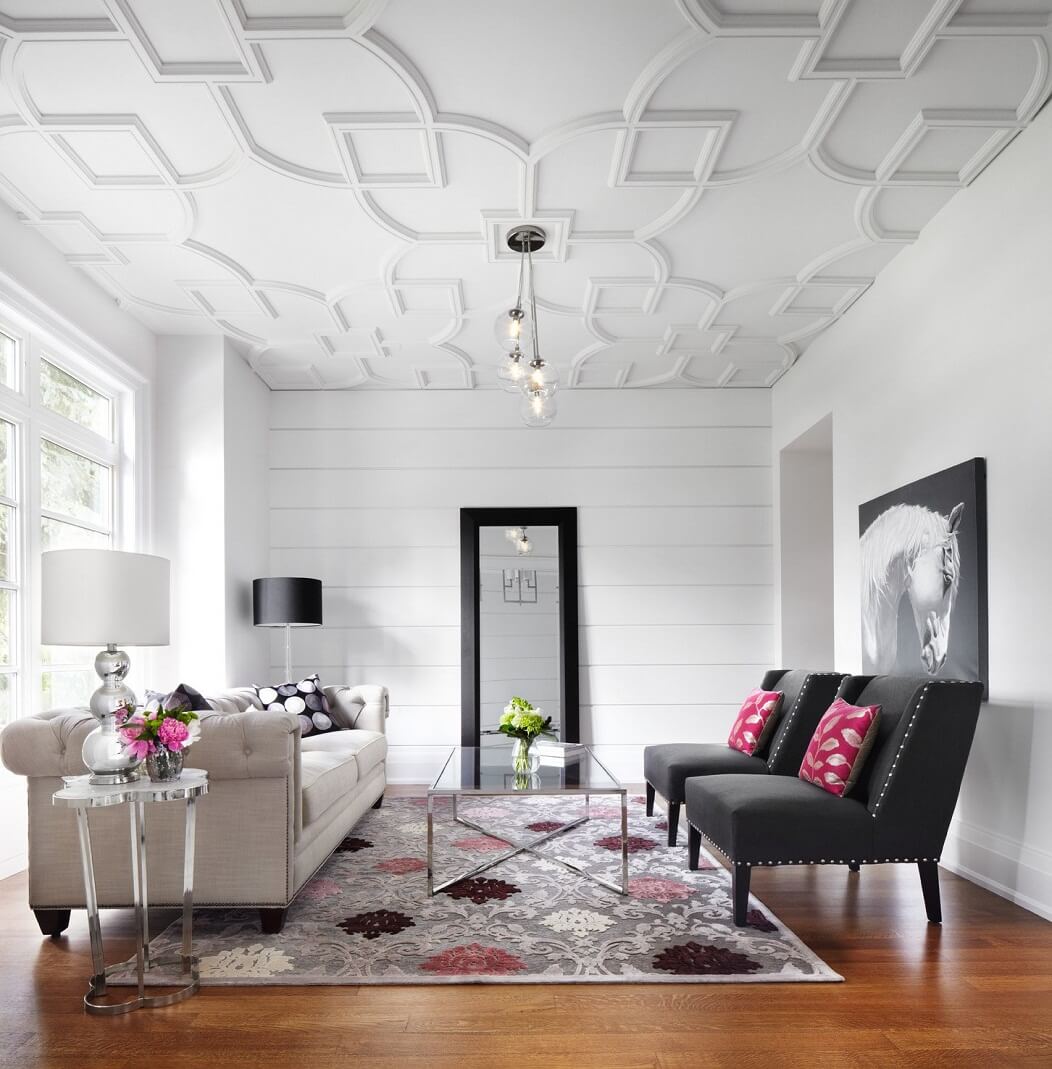
Relief composition of moldings on the ceiling of the living room in the style of minimalism

Smooth moldings without any relief or pattern are suitable for a high-tech interior
It all depends on your imagination and desire. Do not be afraid - do it!
Video: how to make a beautiful decoration from a regular molding

